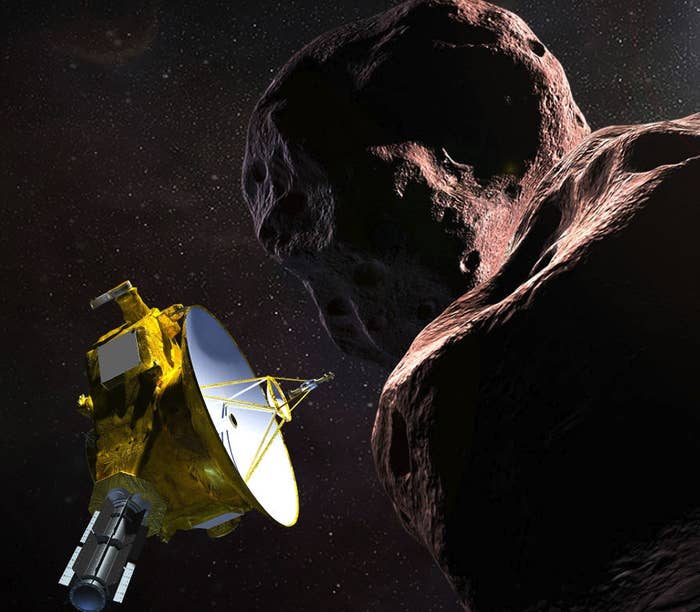
The partial US government shutdown has claimed a victim at the edge of the solar system — NASA's commentary on one of its own probes flying past the most distant object ever visited by a spacecraft. The event will still be broadcast, but the agency will largely be on the sidelines for its big show.
NASA's New Horizons spacecraft will zip past the tiny frozen world called 2014 MU69 (better known by its nickname as Ultima Thule) at 12:33 a.m. ET on Jan. 1. Only about 22 miles wide, Ultima Thule is thought to be a pristine remnant of the comet belt beyond Pluto some 4 billion miles from the sun.
Everyone in science will be watching the long-awaited encounter — except for the space agency itself. Federal furlough rules forbid some NASA employees from attending the festivities.
During the #GovernmentShutdown it looks like @NASA employees such as @JimBridenstine @Dr_ThomasZ et al are prohibited from attending or even talking about anything having to do with @NASANewHorizons flyby of #UitlimaThule https://t.co/3W1kIQeFVk
Never fear, though — there will be scientific commentary on the event. The spacecraft's operators at Johns Hopkins University Applied Physics Laboratory (APL) in Laurel, Maryland, have posted a "Where to Watch" schedule of programs and links on the mission website, for coverage that starts on Friday, Dec. 28. The lab, which operates the far-flung mission, will also report news on Twitter and have live coverage of events on its YouTube Channel.
And late on Thursday, NASA administrator Jim Bridenstine announced in a response to complaints that NASA had funding to continue tweeting flyby events and cover briefings on NASA TV. BuzzFeed News calls to NASA public affairs officials responsible for the mission referred questions to APL on voicemail, citing the partial government shutdown.
Expect to see the @NASANewHorizons social media accounts continue to operate. The contract for these activities was forward funded. This applies to @OSIRISREx and NASA TV too. @NASA will continue to stun the world with its achievements!
Launched in 2006, New Horizons is best known for taking the first close-up views of Pluto and its moon Charon in 2015. Ultima Thule is some 100 million miles deeper in space than that dwarf planet, and the first data from the 31,000 mph flyby will take some eight hours to reach Earth. High-resolution images from the event will likely become available in February if the flyby's complicated choreography of steering rockets and cameras succeeds in capturing images of Ultima Thule as it passes.
"NASA had a whole PR machine spun up and ready to go, and now it looks like that won't happen. But we will get the news out okay," Emily Lakdawalla of the Planetary Society told BuzzFeed News. "It's a silly situation, and unfortunate for the people who worked on it not to be there."
NASA personnel essential to the flyby and keeping the spacecraft operating are still on the job, but everyone else at the agency isn't. Non-NASA spacecraft team members will comment on the flyby and for a first briefing scheduled for New Year's Day morning, which should have data on whether the spacecraft survived the encounter without running into 2014 MU69.
The shutdown also means NASA has had to turn to another contractor lab, the Lunar and Planetary Laboratory at the University of Arizona in Tucson, to document when another space agency probe, OSIRIS-REx, goes into orbit around the asteroid Bennu, another milestone scheduled for New Year's Eve. NASA TV will similarly cover those announcements, according to Bridenstine.
Big milestone coming up! On #NYE19,when I go into orbit around Bennu, I'll break two records: the smallest body ever orbited by a spacecraft and the closest orbit of a planetary body by any spacecraft. For updates, follow @UALPL and keep an eye on https://t.co/zt2Kovamyu
Since the July 4, 1997, landing of the Mars Pathfinder rover, NASA has a habit of scheduling major events on holidays. Perhaps aimed at garnering the attention of taxpayers with holiday time to burn, the practice has this time collided with the government shutdown.
UPDATE
This post has been updated with the announcement by Jim Bridenstine that NASA TV will cover spacecraft briefings despite the partial government shutdown.
